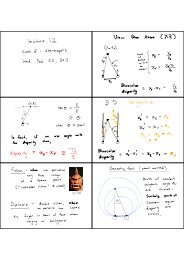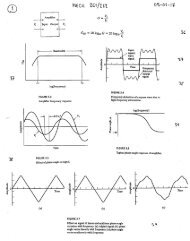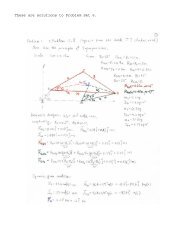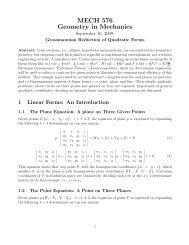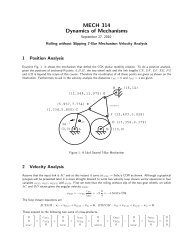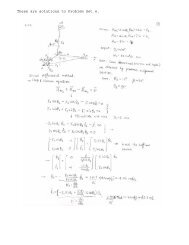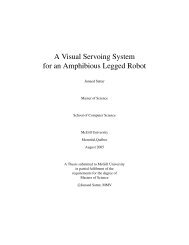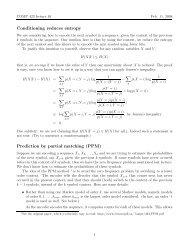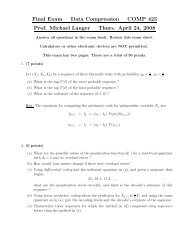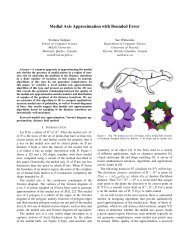Medial Spheres for Shape Representation - CIM - McGill University
Medial Spheres for Shape Representation - CIM - McGill University
Medial Spheres for Shape Representation - CIM - McGill University
You also want an ePaper? Increase the reach of your titles
YUMPU automatically turns print PDFs into web optimized ePapers that Google loves.
2.2.2 Tracing Methods<br />
Computing the medial surface by tracing involves identifying points on junction<br />
curves of medial sheets and following these to discover the complete set of junctions of<br />
medial sheets. When the medial surface of a polyhedron must be computed exactly, Cul-<br />
ver et al. [36] use exact arithmetic to accurately compute the junction curves of the medial<br />
surface by tracing. Because of the high computational cost of using exact arithmetic,<br />
this method is only feasible <strong>for</strong> polyhedra having a small number of faces. Leymarie<br />
and Kimia [78] consider as input a cloud of points and trace medial sheet junctions from<br />
sources detected using exact bisector computations between clusters of surface points. In-<br />
teracting clusters are found quickly by taking advantage of spatial relationships between<br />
clusters. Seams are traced in the direction of increasing medial sphere radius. Simplifica-<br />
tion is achieved by removing junctions close to the boundary.<br />
Tracing methods provide a rich description of the medial surface by explicitly locating<br />
sheet junctions in an efficient manner. However, these descriptions are sensitive to noise<br />
or require sophisticated regularization steps [28] to be useable <strong>for</strong> the application of shape<br />
matching.<br />
2.2.3 Spatial Subdivision Methods<br />
These types of algorithms partition space into disjoint cells and study the nearest<br />
boundary elements to these cells to locate the medial surface. Many compute the general-<br />
ized Voronoi diagram of a solid, rather than the medial surface of a solid. For a polyhedron,<br />
the generalized Voronoi diagram is a superset of the medial surface that additionally con-<br />
tains bisectors of faces and their incident reflex edges and vertices. When the solid is a<br />
32



